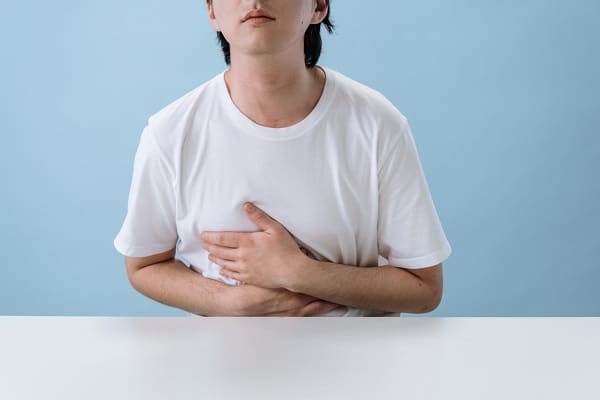The ketogenic diet (more commonly referred to as “keto”) has become super-popular in recent years, and for good reason: it’s been proven to be an effective way to lose weight and provide a wealth of health benefits. It involves eating very low amounts of carbohydrates, high levels of fat, and moderate amounts of protein.
By severely limiting the amount of carbs you’re ingesting, your body will enter a state of ketosis, a metabolic process in which your body uses – burns – fat reserves instead of carbohydrates for fuel, and as a result, you’ll shed weight (particularly in the belly area). You’ll also be able to enjoy several other health benefits, like reduced blood sugar and blood pressure levels, increased good-for-you cholesterol, greater energy, and may even see a reduction in the symptoms that are related to depression and anxiety – and those are just some of the benefits.
Despite the fact that the keto diet offers so many advantages, like everything else in life, with the good, there is always some bad. Keto flu can be one of the negative side effects associated with a low carb, high healthy fat, moderate protein diet.
What is the keto flu? What are the symptoms? What are some potential remedy options? How can you avoid it altogether?
Read on to find the answers to these questions so that you can set yourself up to enjoy the benefits that the keto diet offers, safely.
What is the Keto Flu and Is It a Real Thing?

Though the keto diet is considered safe for most people, it can present some unpleasant side effects; namely, the keto flu.
Also referred to as “carb flu”, keto flu is a term that was created by those who follow a low carb diet and experience undesirable symptoms that may be experienced when first starting this diet plan. Essentially, the keto flu describes a set of symptoms that can feel similar to the traditional flu. These symptoms can occur as a result of the body adjusting to your new diet, which is based on very low carbohydrates. When you severely reduce your carb intake, instead of using glucose as a source of energy, the body creates and burns ketones. Ketones are byproducts that the liver creates when the body breaks down fats, and they then become your primary source of fuel. Traditionally, fat is used as a secondary source of fuel, and your body turns to it when glucose (supplied by carbs) isn’t available.
When your body switches to burning fat instead of carbs, that’s referred to as “ketosis”, which, as mentioned above, is a metabolic process. The body enters ketosis only under particular circumstances; fasting, starvation, or when you severely reduce your carb intake. Generally, it’s recommended that you consume just 50 grams of carbohydrates per day. For most people, that’s a significant reduction; especially if your diet primarily consists of breads, pastas, and processed foods. This drastic decrease can put your body into a state of shock, and it can literally go into a state of withdrawal. That state of withdrawal can create symptoms that are similar to those that people experience when they are weaning off of addictive substances, like alcohol or even caffeine.
Though keto flu isn’t medically recognized and while there is virtually no scientific research on this phenomenon, numerous reports in research papers have mentioned the side effects that can be experienced on the keto diet. Furthermore, there are lots of keto diet groups, and a lot of people in these groups report keto flu symptoms in these groups when they first start the diet.
What are the Symptoms of the Keto Flu?

So, what are the symptoms of the keto flu? They vary from person to person and are very similar to the symptoms that are associated with seasonal flu. In a study, titled Consumer Reports of “Keto Flu” Associated With the Ketogenic Diet, reports of keto flu that were made by people in online forums were researched. The most common keto flu symptoms that were reported in these forums included the following:
- Seasonal flu-like symptoms, such as runny nose, sore throat, coughing, etc.
- Headaches
- Fatigue
- Dizziness
- Nausea
- Brain fog
- Stomach discomfort
- Reduced energy levels
- A general feeling of malaise
Though less common, the following keto flu symptoms were also reported:
- Bloating
- Listlessness (lack of interest, emotion, and enthusiasm)
- Anxiety
- Diarrhea
- Constipation
Though keto flu may not be medically recognized, there is no doubt that many people experience the above-mentioned symptoms, particularly when they first start the ketogenic diet. While a placebo effect can’t be ruled out, that seems to be very unlikely, as numerous reports of flu-like symptoms have been reported in the early stages of the keto diet.
What Causes the Keto Flu?

When you first start eating healthy, you’re supposed to feel great, right? You certainly should, but that might not always happen right away. It can take some time for your body to adjust to a new diet, especially if you’re used to eating large amounts of carbs and you’re now depriving yourself of them. Your body is going to go through a period of detox while it adjusts, and just like detox from anything else, you can feel pretty crummy while your body is adjusting.
Most people burn glucose (sugar) for fuel, and that glucose is supplied by carbs; after all, the body naturally uses carbs as its primary source of energy. One of the fundamental rules of the keto diet is to strictly limit your carb intake, and when you do, your body runs out of glucose and uses fat for fuel instead. As your body is making that transition, it can leave you feeling pretty lousy for a temporary period of time.
Fat is a backup fuel source. When you’re supplying your body with a sufficient amount of carbs, it will use the sugar supplied by those carbs as fuel first, and will only use fat for fuel when it needs to. Since you’re severely limiting the number of carbs you ingest when you’re on the keto diet, your body will enter a state of ketosis, and it is when you’re transitioning into this state, you can experience unpleasant, flu-like symptoms that were discussed above. Most keto flu symptoms are the result of a lack of salt and water, which occurs due to a temporary increase in urine production when the body enters the metabolic process of ketosis.
When Does the Keto Flu Start?

For the average person, the symptoms of keto flu set in within the first day or two of starting the ketogenic diet. Fortunately, it only lasts about a week, and they subside as your body adjusts to ketosis.
Does Everybody Get Ketosis Flu?

No, not everyone gets the keto flu. It really varies from person to person; however, generally, those who were eating high levels of carbs before they started keto are more prone to keto flu than those who were eating moderate amounts of carbs.
See also: Avoid These Common Keto Mistakes
How to Avoid the Keto Flu
There are some simple things that you can do to avoid the symptoms of keto flu. Examples include:
- Drinking plenty of water
- Eat plenty of healthy fats
- Replenish your electrolytes
- Maintain your carb intake
- Avoid strenuous exercise
- Get plenty of sleep
Remember that keto flu isn’t caused by a virus and it’s only temporary. Within a week, the symptoms will subside and you’ll be as good as new. Do note, however, if the symptoms are severe, you should seek medical attention, as something else could be going on.
Our Thoughts on The Symptoms of Ketosis Flu
While the keto flu may be one of the downsides of a low-carb diet, try not to let it deter you. Not everyone is affected, and if you are, the symptoms will subside in no time.

